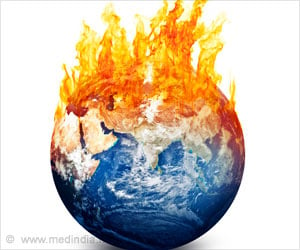
"We were surprised at its potential contribution to climate," Sarah Doherty, one of the lead co-ordinating lead authors of the study from the University of Washington, said.
The silver lining may be that controlling these emissions can deliver more immediate climate benefits than trying to control carbon dioxide, she said.
Some previous research had hinted that models were underestimating black-carbon emissions, Doherty said, from such things as open burning of forests, crops and grasslands, and from energy-related emissions in Southeast Asia and East Asia.
Black carbon's role in climate is complex. Dark particles in the air work to shade the Earth's surface while warming the atmosphere. Black carbon that settles on the surface of snow and ice darkens the surface to absorb more sunlight and increase melting.
Finally, soot particles influence cloud formation in ways that can have either a cooling or warming impact.
Advertisement
Doherty was executive director of the International Global Atmospheric Chemistry Projectin 2009 when policy groups were seeking better information on the benefits of reducing black-carbon emissions.
Advertisement
"Because of a lack of action to reduce carbon dioxide emissions, the policy community is asking what else we can do, particularly to help places like the Arctic that are melting much more quickly than we had anticipated," Doherty said.
"We hope reducing black-carbon emissions buys us some time. But it doesn't replace cutting back on CO2 emissions," she said.
While carbon dioxide has a half-life of 100 years, black carbon stays in the atmosphere for only a few days.
The authors investigated various sources of black carbon to see which reductions might have the most short-term cooling impact.
Regulating emissions from diesel engines followed by replacing some wood- and coal-burning household stoves, authors find, would have the greatest immediate cooling impact.
"If you're just thinking about impact on climate, you would want to be strategic about which sources you cut back on," Doherty said.
"We looked at the overall impact because some of these sources also emit associated particles that can have counteracting effects," she said.
The report incorporates data that Doherty and co-author Stephen Warren, a UW professor of atmospheric sciences, gathered between 2007 and 2009 to measure soot on Arctic snow. Calculating black carbon deposits in the Arctic is difficult, so data are essential for testing and correcting models.
The study has been published online in the Journal of Geophysical Research-Atmospheres.
Source-ANI








